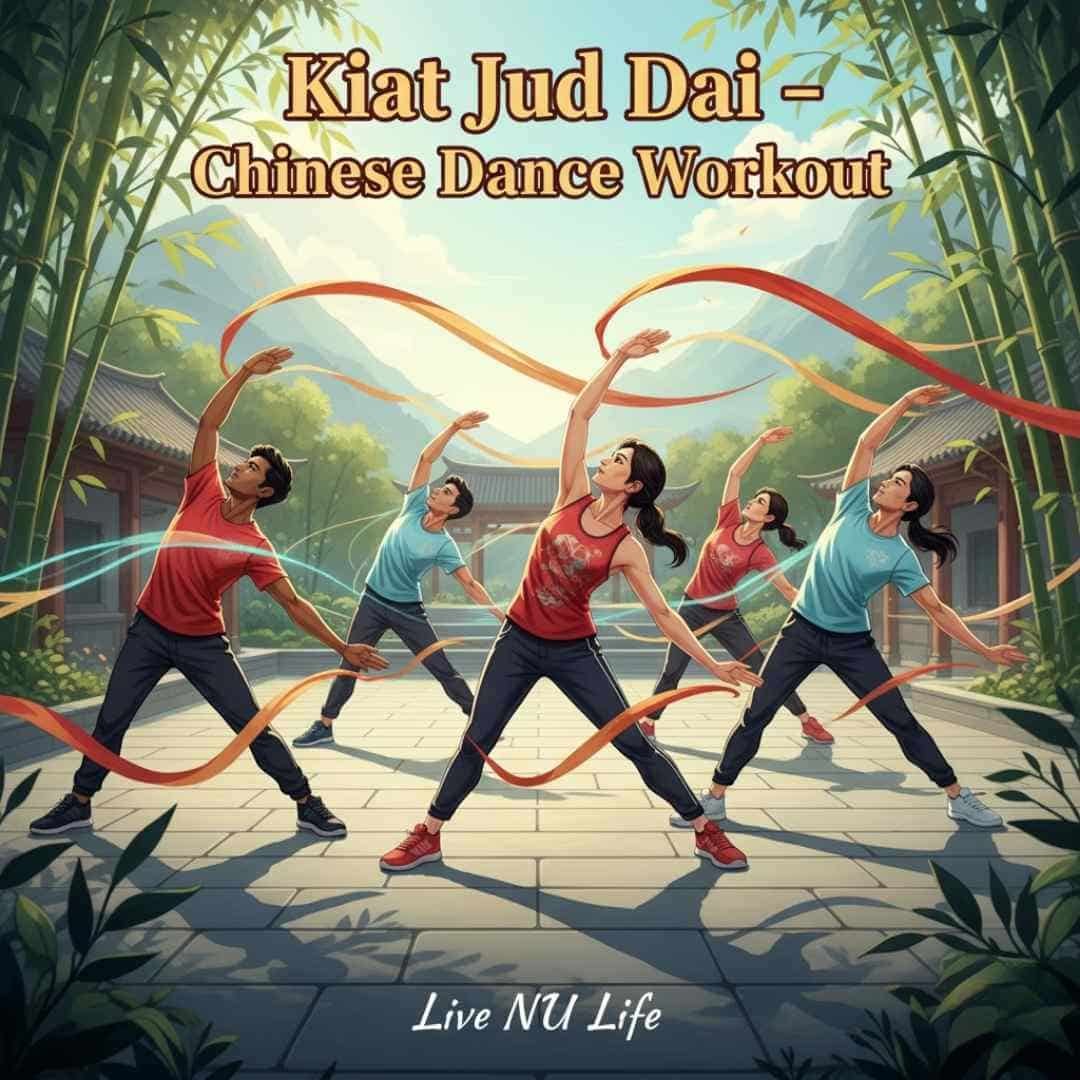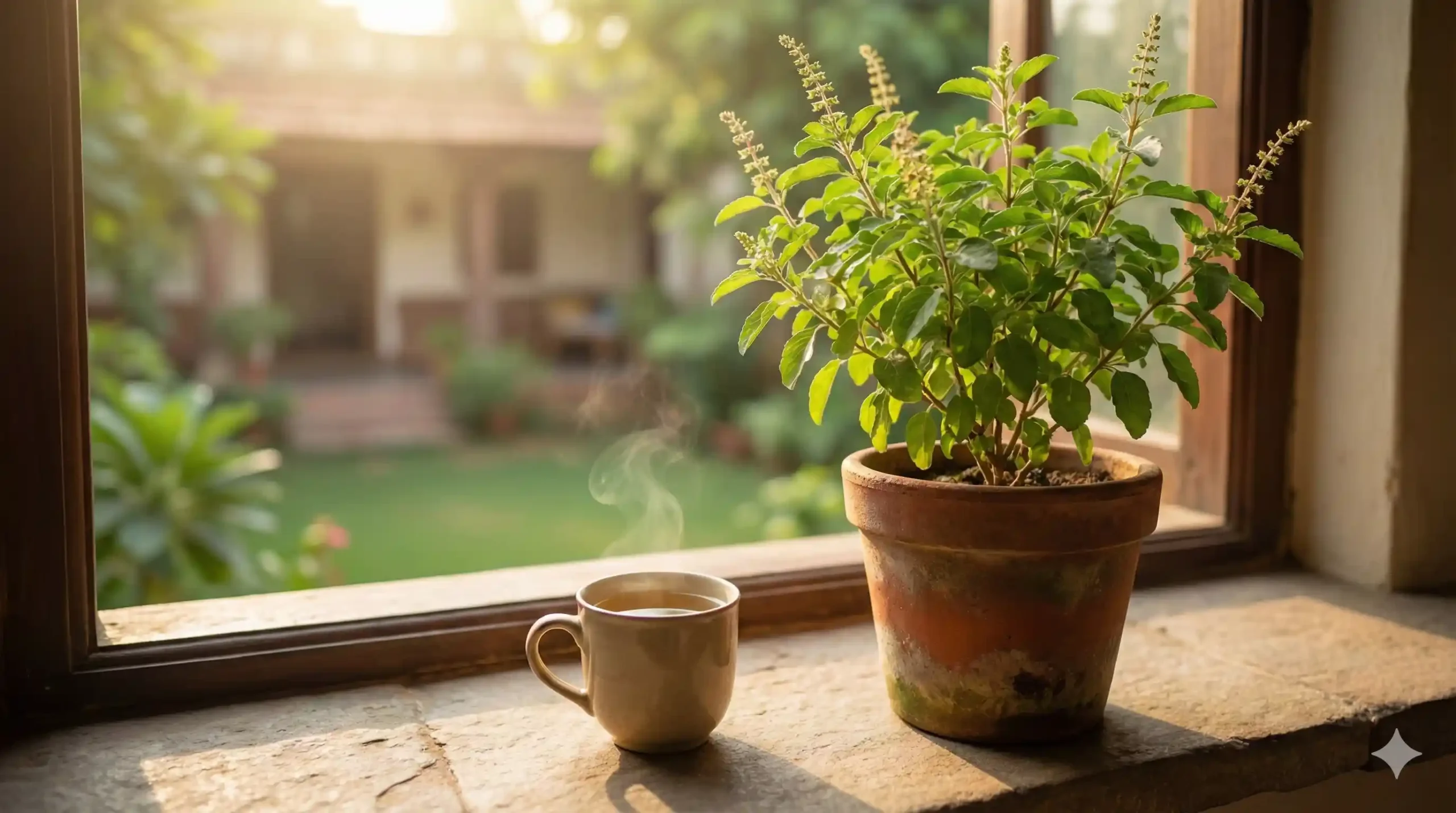Table of Contents
ToggleKiat Jud Dai – Chinese Dance Workout for Weight Loss: Does It Really Work?
Kiat Jud Dai is a china dance workout for weight loss. Many people now talk about this. Some say it looks simple, some say it’s not effective. But this kind of movement focuses on body rhythm, breath, and burning fat. So before you decide, understand how it really works.
Start with open space, feet shoulder-width apart. Music is slow at first, then faster. You move your arms up and down, like pulling waves. Then twist the waist side to side, as if ringing water from a cloth. These are not only dance. These are exercises for the heart, lungs, and stomach. Kiat Jud Dai can burn calories if you keep practicing.
Each step connects with breathing. Inhale when arms lift, exhale when twisting the waist. Feel sweat come, body light. (Remember to drink water). The workout can go 20 to 30 minutes. Longer if your stamina is strong. Like qigong, but more lively.
Now, why do people think it may not work? Because no heavy weight, no gym machine. But dancing still burns fat. Continuous movement, fast rhythm, full body shake. Your blood flows better, and fat starts to melt.
Kiat Jud Dai is not a miracle. You cannot eat fried food daily and expect only dancing to reduce belly fat. But as support, as a daily practice, it gives good results. It also makes one happy, stress less.
So, does it really work? Yes, if you do it correctly and regularly. No, if you just watch and clap your hands. The answer is in your practice.
What Is Kiat Jud Dai, and Where Did It Come From?
Kiat Jud Dai is a kind of Chinese dance exercise. Many people call it a dance, but it is also a body training for health and weight loss. The main idea of this is to use simple dance steps with breathing and body movement to burn fat, make joints flexible, and keep the mind calm. Not heavy exercise like running or gym, but slow rhythm, twist, bend, turn. Through the movement of the external body to stimulate the internal organ.
It comes from China. In the old times, people used music and body movement to improve blood flow and digestion. Farmers and workers do this kind of dance after a long day’s work. The style spread in small towns first, then into cities. Later, teachers start to use it in group classes (sometimes outdoors in parks). It was called Kiat Jud Dai, meaning “twist the waist and bring energy.” This practice stays popular because it is easy to learn, no need of equipment is needed, and no big space is required.
Now, many fitness centers use this technique as a weight loss dance. The steps are not complex. Start with feet apart, arms free, then sway side to side (like a tree in the wind). Move arms up and down with the beat (as if you are washing clothes in a river). Turn waist, bend knees, let body loosen. Always keep breathing slowly and deeply.
So Kiat Jud Dai is dance, but also medicine in movement. Simple, practical, and still alive today.
Explore the roots and benefits of Traditional Chinese Fitness Techniques including Tai Chi and Qigong, Baduanjin , Wuqinxi & Yi Jin Jing.
Why Is Kiat Jud Dai Called a Chinese Weight Loss Dance?
Kiat Jud Dai is a Chinese dance technique. People call it a weight loss dance because the movements burn fat and improve digestion. This kind of practice focuses on body rhythm and breath. Through movement of the waist, hips, and legs, you stimulate the meridian inside the body.
How It Works for Weight Loss
- The dance uses big body swings and turns (like a pendulum).
- Waist moves side to side, front to back, so fat around the belly reduces.
- Legs bend and stretch, increasing blood flow.
Hands wave in the air, lift, push down (as if to move heavy clouds).
Do this for 20–30 minutes, and body sweat and metabolism improve.
Step-by-Step Feeling
- Stand straight, feet apart, arms loose.
- Move your hips in a circle, slowly, then faster (imagine you draw a big circle on the floor).
- Swing arms left and right, follow the rhythm.
- Add bounce from knees, let the whole body flow.
- Keep breathing with movement (inhale when arms up, exhale when arms down).
Why It is Called Dance
It is not just an exercise. It looks like a dance because the movement is graceful. It connects body, breath, and music. So people enjoy dancing, but the effect is fitness and weight loss.
Do not force. Keep relaxed, like a rag doll. Kiat Jud Dai is simple, safe, and fun. You lose weight without stress, and also gain energy inside.
Discover the importance of Fitness and Nutrition for everyday health.
How Does Kiat Jud Dai Claim to Help With Belly Fat?
Kiat Jud Dai is a Chinese dance technique that focuses on belly and core movement. People say this helps with belly fat and strengthens the waist. Start slowly. Feel the body move. Arms, legs, and hips work together.
Warm-Up First
Start with feet apart, arms loose by your sides. Shake your body gently. Twist your waist slowly (like wringing a towel). Breathe deep and feel tension leave your belly. This kind of warm-up prepares the body for Kiat Jud Dai.
Core Movement for Belly Fat
Move hips in circles (small first, then bigger). Imagine moving fat away with each rotation. Pull stomach in, push out, like pushing air from a balloon. Hands move with hips (continue to watch your hands throughout the exercise). Legs bend slightly, feel the ground. This helps to target the belly muscles deeply.
Arm and Waist Flow
Raise your arms slowly above your head, like holding a big ball. Rotate torso side to side (do not hurry). Belly must follow movement, not only arms. It teaches the belly to move naturally with rhythm. This kind of movement increases blood flow and burns energy.
Finishing Move
Stand straight, feet together. Shake out arms and hips (like a rag doll). Breathe long and slow. Massage the belly with hands (like stirring soup). This helps digestion and supports belly fat loss.
Tips for Better Results
Do Kiat Jud Dai regularly (daily is best). Drink water before and after. Focus on belly, not speed. Slow, controlled movement burns more. Imagine fat leaving with every twist and turn.
It is gentle but effective. It teaches the belly to move and burn. Use your body fully, breathe fully, and repeat. This is how Kiat Jud Dai claims to help with belly fat.
Explore the foundations of Health and Fitness for a stronger lifestyle.
Kiat Jud Dai vs. Traditional Dance Workouts – What’s Different?
Kiat Jud Dai is different from normal dance workouts. It focus on energy, body, and mind together. Start with this in the morning, even 10 minutes helps. Traditional dance mostly involves moving legs and arms fast. Kiat Jud Dai moves slowly, feeling each joint and muscle.
Body Movements
- Start with arms by your sides, feet shoulder-width wide.
- Lift arms like holding water, then push up slowly (feel the stretch in your shoulders).
- Move your hips in a circle, like stirring a pot.
- In traditional dance, the hips mostly jump. Here, hips push, pull, and twist with breath.
Breathing
- Breathe in nose, out mouth.
- Match each movement with breath.
- It focuses on inhale-exhale to move energy.
- In normal dancing, breathing is often fast, forgets to take deep breaths.
Mind Connection
- Close your eyes sometimes, feel your body inside.
- Imagine energy flow like a river in legs and arms.
- Traditional dance focuses on the outside, mirrors, steps, and music.
- It focuses inside, but still follows the rhythm (slow rhythm helps).
Benefits
- Stronger core, joints better, mind calm.
- Traditional dance is good for cardio, heartburn, and burning calories.
- It is also good for posture, balance, and energy flow.
Practice Tips
- Start small, 5–10 minutes per day.
- Watch your hands, wrists, and shoulders (avoid strain).
- Repeat slowly, like learning to write letters first.
- It is not a race; feel each step.
Kiat Jud Dai is gentle, powerful, and different from normal dance. Do it slowly, watch your body, feel energy, and enjoy small progress.
Health Benefits Beyond Weight Loss – What Users Report
Many people practice Kiat Jud Dai not just for weight loss. This technique focuses on whole-body energy. Move, stretch, and breathe. Users say the benefits surprise them.
- Energy Wake-Up
- Start with slow breathing. Inhale through the nose, fill the belly.
- Move arms like opening a door. Feel the energy flow.
- Users report more wake-up in the morning. Not tired like before.
- Do small jumps if you feel sleepy (watch knees).
- Digestion and Stomach Comfort
- Bend forward slowly, then lift your chest.
- Twist torso gently like wringing towel.
- Kiat Jud Dai helps stomach burn less. Some say the heart is gone.
- Drink water after, not during twisting.
- Mood and Mind Calm
- Close your eyes, move your hands like drawing a circle in the air.
- Imagine pulling tension out of the body.
- Users feel less stress, minds are less busy.
- Repeat slowly, focus on the shoulders and neck.
- Flexibility and Posture
- Stretch legs wide, arms above head to support the sky.
- Bend sideways (careful not to fall).
- Users report easier movement. Back less stiff.
- Do small rotations of the spine. Feel bones move (not pain).
- Sleep Improvement
- Finish with hands on knees, breathe long.
- Think of energy going down to the feet.
- Some users sleep faster, wake up fresh.
- Don’t rush. Let the body relax slowly.
Kiat Jud Dai works for more than weight. Energy, digestion, mood, flexibility, sleep. Start simple. Listen body. Practice daily. Watch changes come slowly.
Check out our practical Health and Fitness Tips to stay active and well.
Who Should Avoid Kiat Jud Dai or Be Careful?
Kiat Jud Dai is a strong qigong movement. It focuses on stretching, twisting, and fast arm motion. Not everyone can do it safely. If you are unsure about your body, watch first. It can hurt if done without care.
Heart or Blood Pressure Problems
Do not start Kiat Jud Dai if the heart is weak. Avoid if high blood pressure or low blood pressure. Fast twisting and deep breathing can make the heart burn or dizzy. Move slowly at first if the doctor allows. Stop immediately if your chest feels tight.
Joint or Muscle Issues
Avoid if knees, shoulders, or spine have an injury. Twisting and bending can worsen pain. Support yourself with a wall or a chair (like holding onto a stick). Move as small as possible. No need to push too far. Listen to the body signal.
Pregnancy
Pregnant women, be careful. It twists the abdomen, jumps lightly, and presses the stomach. Use the slow version only (hands soft, legs light). Avoid all sudden turns. Protect the baby first.
Older Adults or Weak Body
If the body is weak, take a rest before starting. Kiat Jud Dai can make one tired quickly. Start with warm-up like simple arm swings, slow leg bends. No need to rush. Keep balance by imagining holding onto the sky.
Other Conditions
If dizziness, have had recent surgery, or migraine, avoid it. Fast motion and breathing can make it worse. Wait until strong.
Learn more about Budots and its origins and culture.
Remember: It must be gentle if any problem exists. Never push hard. Small movement, slow breathing, attention on the body first. Then you can slowly increase speed.
Delve deeper into the science and impact of Mycobacterium tuberculosis, the bacterium responsible for tuberculosis.
Frequently Asked Questions
Kiat Jud Dai is a dance workout that focuses on weight loss and stretching. Moves are fast and slow. It uses arms, legs, hips, whole body. Heart gets warm, muscles stretch. Good for daily energy.
Start with 10-15 minutes. Then go up to 30 minutes per day. Can do it every day if I feel okay. Listen to your body. Do not push too hard at the start.
Wear loose clothes for moving arms and legs. Shoes are soft but support the feet. Hair tied back. Nothing heavy or tight.
Yes, beginners can start slowly. Watch the steps first. Repeat simple moves many times. Then combine. Do not worry if it looks funny at first. The body learn fast.
Yes, Kiat Jud Dai burns calories. Moves jump, twist, stretch. Combine with walking or light jogging. Drink water before and after.
Yes, need a small space only. Start with small steps. Keep balance. Play music for rhythm. (Music helps you follow moves naturally)







